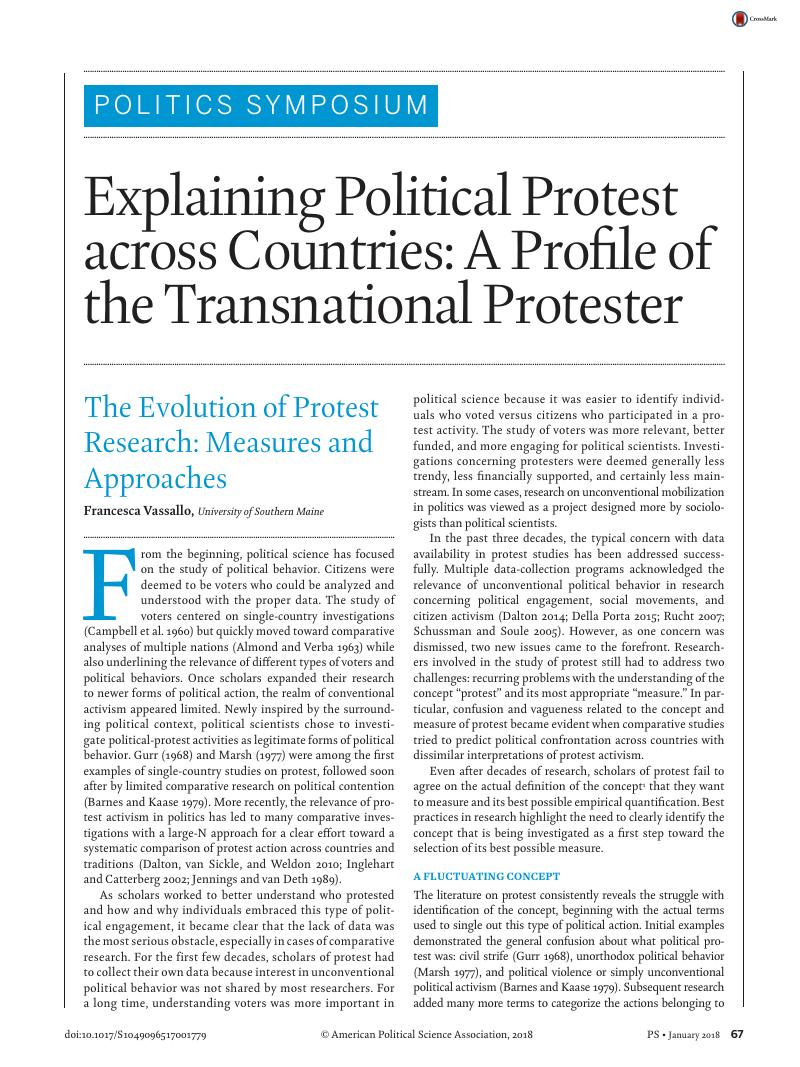Crossref Citations
This article has been cited by the following publications. This list is generated based on data provided by Crossref.
Vassallo, Francesca
2020.
Teaching Comparative Political Behavior in the Era of Digital Activism.
Journal of Political Science Education,
Vol. 16,
Issue. 3,
p.
399.
Kołczyńska, Marta
2020.
Changes or Cross‐National Differences? Effects of Economic Inequality on Protest Participation.
Social Science Quarterly,
Vol. 101,
Issue. 1,
p.
256.
Barrie, Christopher
2021.
Political sociology in a time of protest.
Current Sociology,
Vol. 69,
Issue. 6,
p.
919.
Vargas-Hernández, José G.
and
Vargas-González, M. C. Omar C.
2023.
Sustainable Development and Environmental Stewardship.
p.
243.





